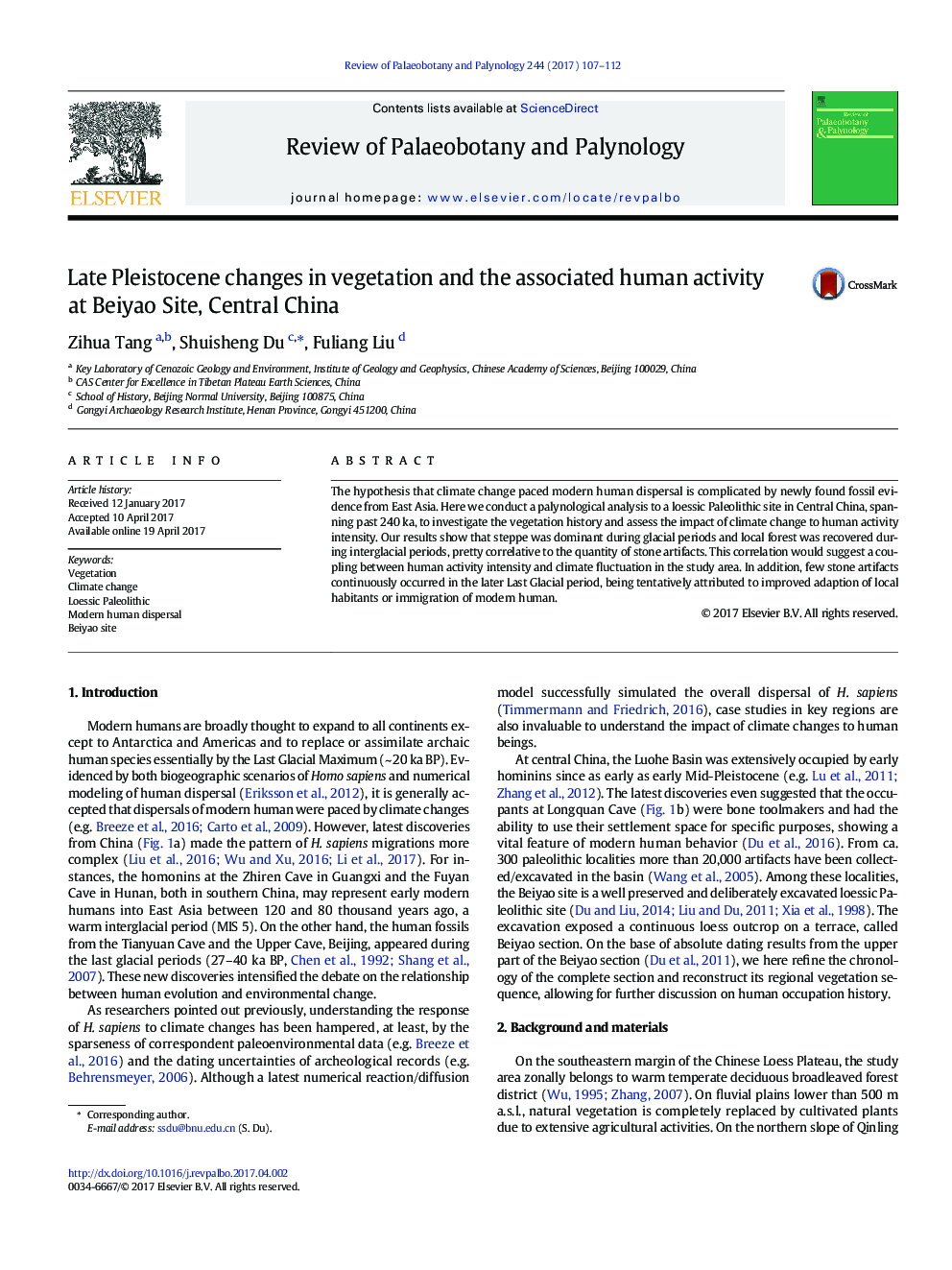| Article ID | Journal | Published Year | Pages | File Type |
|---|---|---|---|---|
| 5788361 | Review of Palaeobotany and Palynology | 2017 | 6 Pages |
Abstract
The hypothesis that climate change paced modern human dispersal is complicated by newly found fossil evidence from East Asia. Here we conduct a palynological analysis to a loessic Paleolithic site in Central China, spanning past 240Â ka, to investigate the vegetation history and assess the impact of climate change to human activity intensity. Our results show that steppe was dominant during glacial periods and local forest was recovered during interglacial periods, pretty correlative to the quantity of stone artifacts. This correlation would suggest a coupling between human activity intensity and climate fluctuation in the study area. In addition, few stone artifacts continuously occurred in the later Last Glacial period, being tentatively attributed to improved adaption of local habitants or immigration of modern human.
Keywords
Related Topics
Physical Sciences and Engineering
Earth and Planetary Sciences
Palaeontology
Authors
Zihua Tang, Shuisheng Du, Fuliang Liu,
